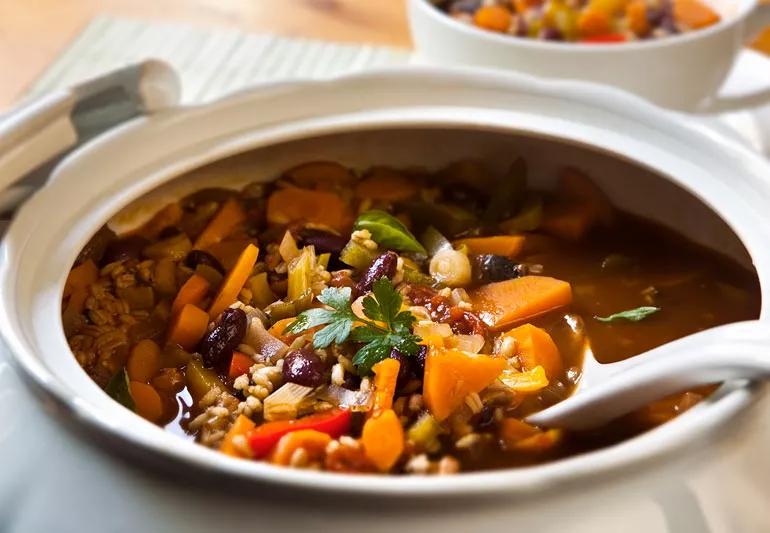Advertisement
In the battle of the roughage, which one reigns supreme?

It’s best known for keeping your internal plumbing clear, but did you know that fiber actually has health benefits that go beyond helping you stay regular?
Advertisement
Cleveland Clinic is a non-profit academic medical center. Advertising on our site helps support our mission. We do not endorse non-Cleveland Clinic products or services. Policy
“Fiber is an important nutrient that comes from plants. It’s sometimes called roughage or bulk,” says registered dietitian Gillian Culbertson MS, RD, LD.
Fiber comes in two forms: soluble and insoluble. Getting the right amount of both can aid digestion and may even lower your risk for certain chronic diseases.
When you eat, your body breaks food down into nutrients it can use. But it can’t digest or absorb fiber, which is actually a good thing. Instead, fiber stays mostly intact for its journey through your body.
Soluble fiber dissolves in water and other body fluids. When it does, it forms a gel-like material as it passes through. Once it makes it to the colon, it feeds your good gut bacteria. Healthy gut bacteria are linked to a host of health benefits, including some protection against obesity and its related conditions, such as diabetes.
Insoluble fiber doesn’t dissolve in fluids. Instead, it absorbs them and sticks to other materials to form stool. This process leads to softer, bulkier — and more regular — stools.
Both kinds of fiber are essential for your health. Fiber’s benefits include:
Advertisement
The gel-like substance that soluble fiber creates in your body:
Insoluble fiber:
Good sources of soluble fiber include:
“Reach for these foods when you need a snack, or add them to soups, salads and other meals,” Culbertson suggests.
Good sources of insoluble fiber include:
“Since most plants have both forms of fiber, you get more bang for your buck when you eat a diet rich in vegetables,” Culbertson says. “Breakfast can be a great time to get insoluble fiber through high-fiber cereals and oatmeal. You can also use whole-wheat flour instead of white flour in some recipes.”
There’s no need to track soluble vs. insoluble fiber intake — instead, focus on the total amount of fiber you eat daily. Here are the recommended amounts:
Check nutrition labels to track how much fiber you’re eating. And if you’re one of the many Americans who don’t get enough, start slowly and work your way up, Culbertson recommends. Too much fiber too soon can lead to gas pain and bloating.
“Eating a diet rich in a variety of whole foods, including fruits, vegetables and legumes, is a great place to start,” Culbertson says. “And while you may occasionally benefit from a fiber supplement, food is always going to be the best source.”
Advertisement
Learn more about our editorial process.
Advertisement

This carbohydrate helps you avoid constipation, stabilize blood sugar, lower cholesterol and stay fuller longer

Most adults aren’t getting enough of the essential nutrient

Choose foods that are easily broken down in your digestive system, like fruits and vegetables without skins or seeds

This spiny sea veggie may help your heart, gut, immune system and more

The fiber supplement can help ease constipation, manage diabetes and lower LDL cholesterol

In a world of confusing choices, your healthcare provider can be your best resource

10 delicious dishes with 10+ grams of fiber per serving

From blackberries to barley, healthy high-fiber foods are plentiful

If you’re feeling short of breath, sleep can be tough — propping yourself up or sleeping on your side may help

If you fear the unknown or find yourself needing reassurance often, you may identify with this attachment style

If you’re looking to boost your gut health, it’s better to get fiber from whole foods